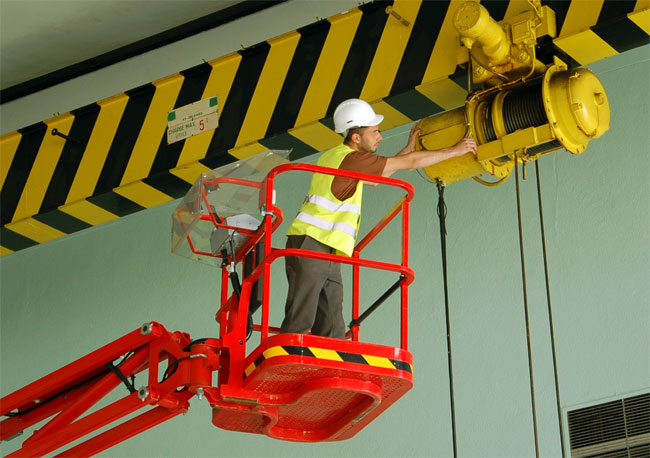How to Keep Workers Safe at any Height
Working off the ground can be dangerous. Here are some methods for improved safety

Working at height continues to rank high on the list every year when it comes to OSHA statistics, potential causes of major injuries and even fatalities.
Research shows that far too many people end up injured or worse because of their work on ladders, rooftops or other spots above the ground. As a result, it is extremely important for EHS leaders to be aware of the potential hazards their personnel face when working at heights, as well as the best ways to keep employees safe on the job.
Make height safety a priority
Plan appropriately
One of the first steps to ensure the safety of workers is to plan appropriately before any jobs at heights begin. Upcoming work should be examined for any potential risks, and those risks should be weighed. Consider things like the amount of time workers will need to spend on a task that will be done at heights, how far up they will be and the condition of the surface on which they will be working.
Wherever possible, try to find ways to avoid having people working at heights and instead devise alternative solutions that don’t pose such a risk. However, if tasks in the air are unavoidable, it is critical that the work is continually supervised and that only the most experienced and well-trained staff are allocated to the jobs.
It pays to have workers complete tasks from an existing spot that has been found to be safe in the past. If this is not possible, the working conditions should be examined to check that floor-hole covers won’t become a trip hazard, people can get to and from each spot without being at risk of falling or injuring themselves, and workers can move about safely and easily stretch and bend from their working position. Don’t forget that you should also have an emergency evacuation and rescue plan in place just in case an incident occurs.
Use proper equipment
It is also essential for employees who must complete jobs at heights to have the right equipment available to them. Workers need to be strapped into a harness or other fall protection equipment that prevents them from falling and injuring themselves.
Personnel should also be protected from any potential falling objects or structures and always wear hard hats, gloves and goggles when necessary. Other precautions such as guardrails and scissor lifts can offer added protection. In addition, the safety equipment used at heights should be maintained, checked regularly and kept in mint condition. Any pieces of equipment that experience an impact must be immediately replaced, as they can become faulty.
In some cases, permanent maintenance platforms with the proper guarding should be installed rather than depending on ladders or forklift nests, when possible.
Ensure ladders are used correctly and safely
One of the most common issues that occurs when working at heights involves people falling off a ladder. As a result, these tools need to be used carefully and correctly. For starters, make sure the ladders used on the work site are both strong enough and suited to the job being completed. Always position ladders on level ground so they are stable. Steer clear of wet, icy, snowy or muddy surfaces, as well as electrical power lines. It is also preferable for ladders to be secured before use.
Workers should be trained to check ladders and ensure that the hinged metal braces are locked down and straight before they start climbing. Otherwise, the ladder may fall over or buckle. It is also important that workers don’t sit or stand on the top step, or lean out too far to the left or right of the ladder, as this can cause a fall.
When working from a ladder, personnel should utilize a holster or tool belt to carry their supplies, tools or other equipment. This will allow them to have their hands free for climbing safely up and down. It is preferable for employees to keep the time spent working from a ladder to 30 minutes or less so they don’t become too fatigued and risk a fall.
Guard the problem areas
In many warehouses, the problem areas are:
- At the edge of docks or dock pits (suggest installing dock safety gates for problem areas)
- Edge of mezzanines or pick modules
- On elevated work platforms
- On ladders (rolling or step)
- When improperly climbing racks or other structures never designed for climbing
Keep your records up to date
If someone becomes injured in the workplace, it is imperative that records are kept of the incident and of any injuries that occur as a result. A detailed incident report should be written including the date, time and specific location of the accident; the events leading up to it; the environmental conditions; and any damage that occurred to equipment or the work space.
Tags: lean manufacturing, industrial safety, lean warehousing, warehouse safety, industrial accident prevention, Safety & Ergonomics, Warehouse Management, warehousing, Material Handling
Evan Fleishacker



